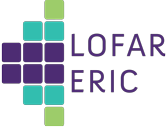Speaker
Description
The wide bandwidth and high frequency and time resolution capabilities of LOFAR make it an excellent instrument for observing both large and small scale ionospheric plasma structures. The geographical distribution of LOFAR stations further permits characterisation of these structures as they propagate through the mid-latitudes. LOFAR was used to track the propagation of a travelling ionospheric disturbance (TID) containing embedded sub-structures which generated unusual scintillation patterns over a distance of >1200 km across Northern Europe. Broadband trans-ionospheric radio scintillation observations of these phenomena are, to our knowledge, unreported in the literature as is the ability to track them over such a distance. The features are characterised by an initial broadband signal fade and enhancement which is then followed by a series of interference fringes, caused by diffractive fringing as the radio signal transitions through regions of relatively steep plasma density gradient at the trailing edge of the plasma structures. The structures retained their characteristics consistently over the full 1200 km from Poland to the North Sea implying self-coherence for several hours. The TID propagation altitude of 110 km was directly measured from medium frequency radar demonstrating that these were E-region phenomena. Co-temporal GPS data was used to establish that these plasma density variations were very small, with a maximum likely amplitude of <<1% of ionospheric plasma density in the LOFAR field-of-view.

